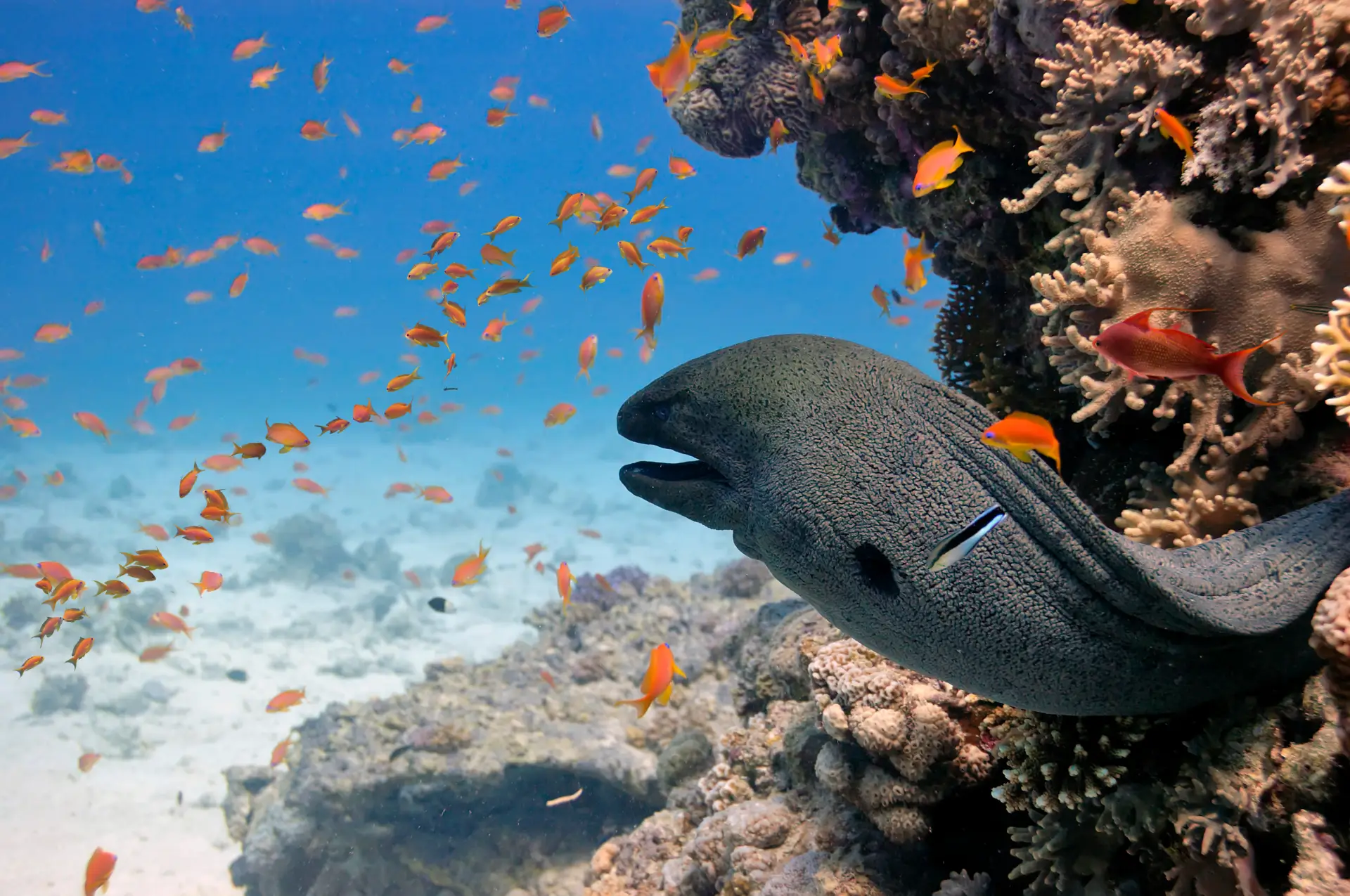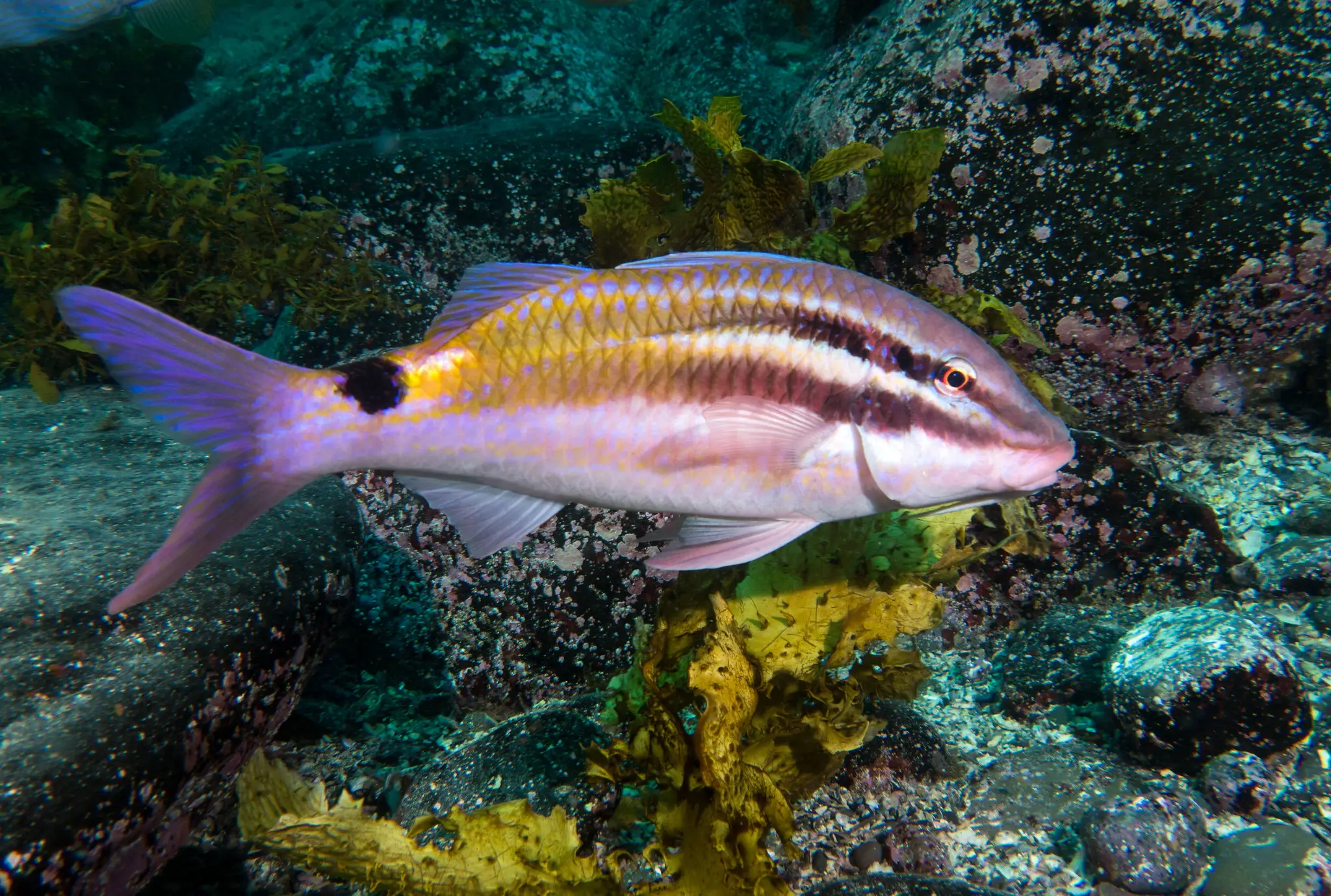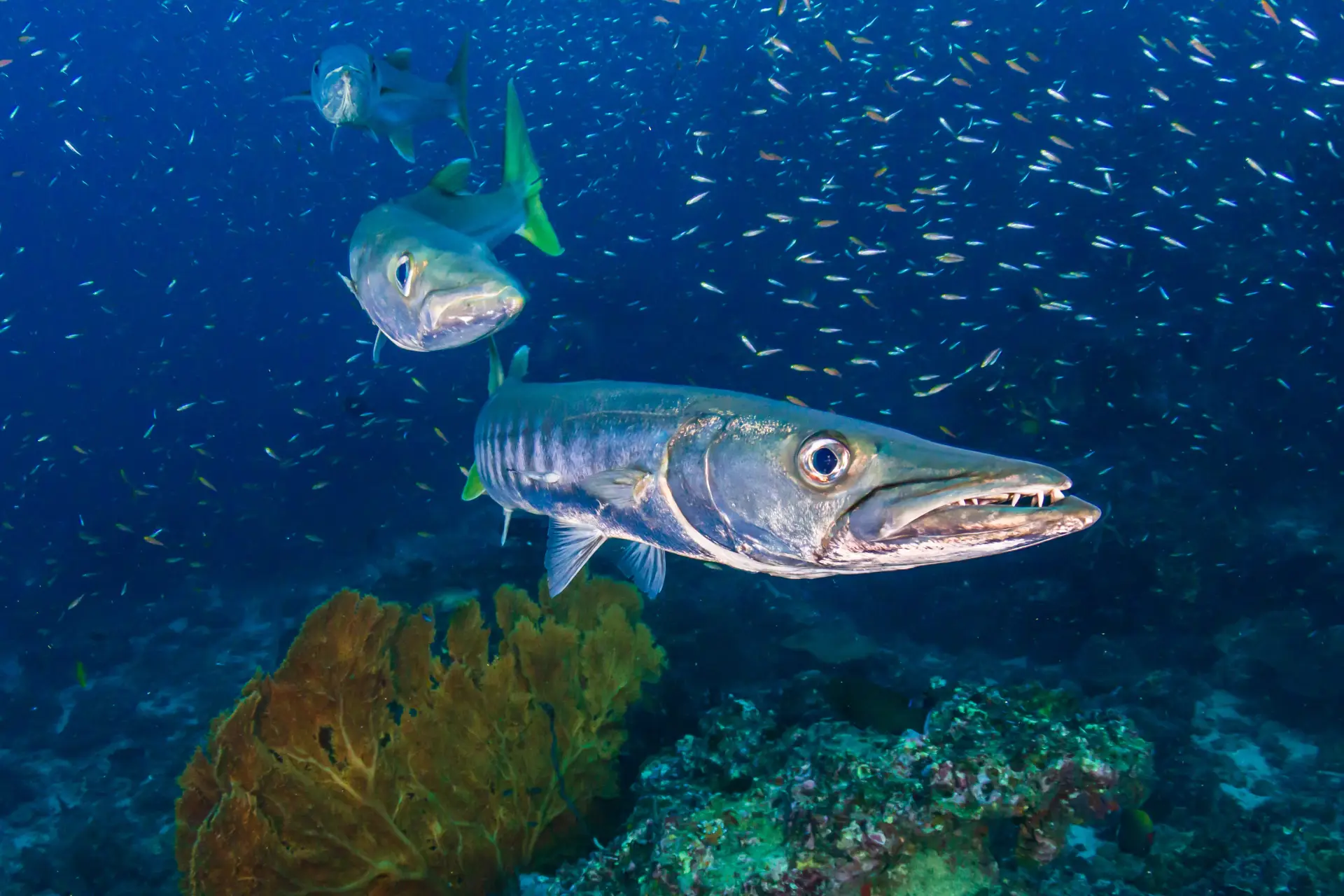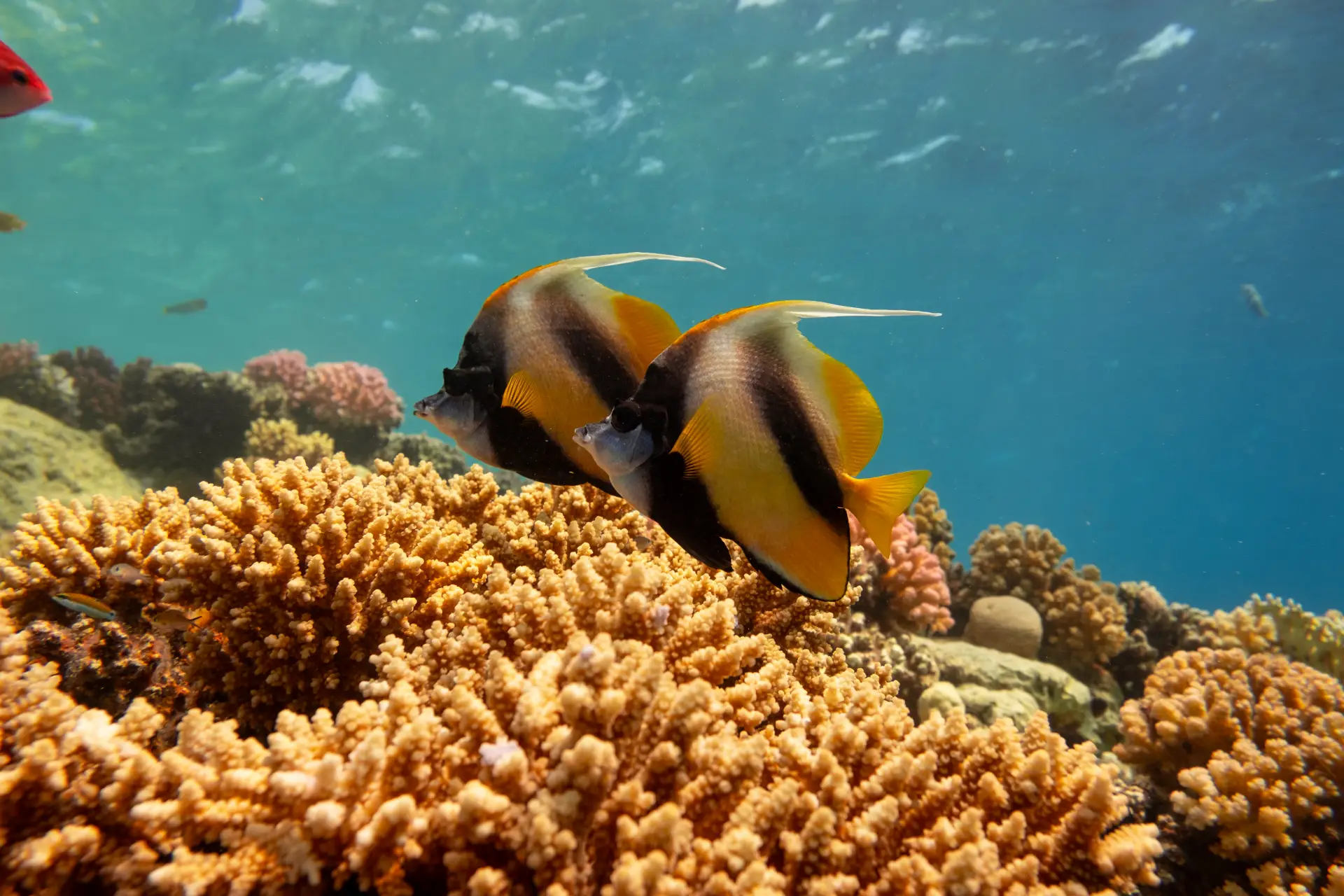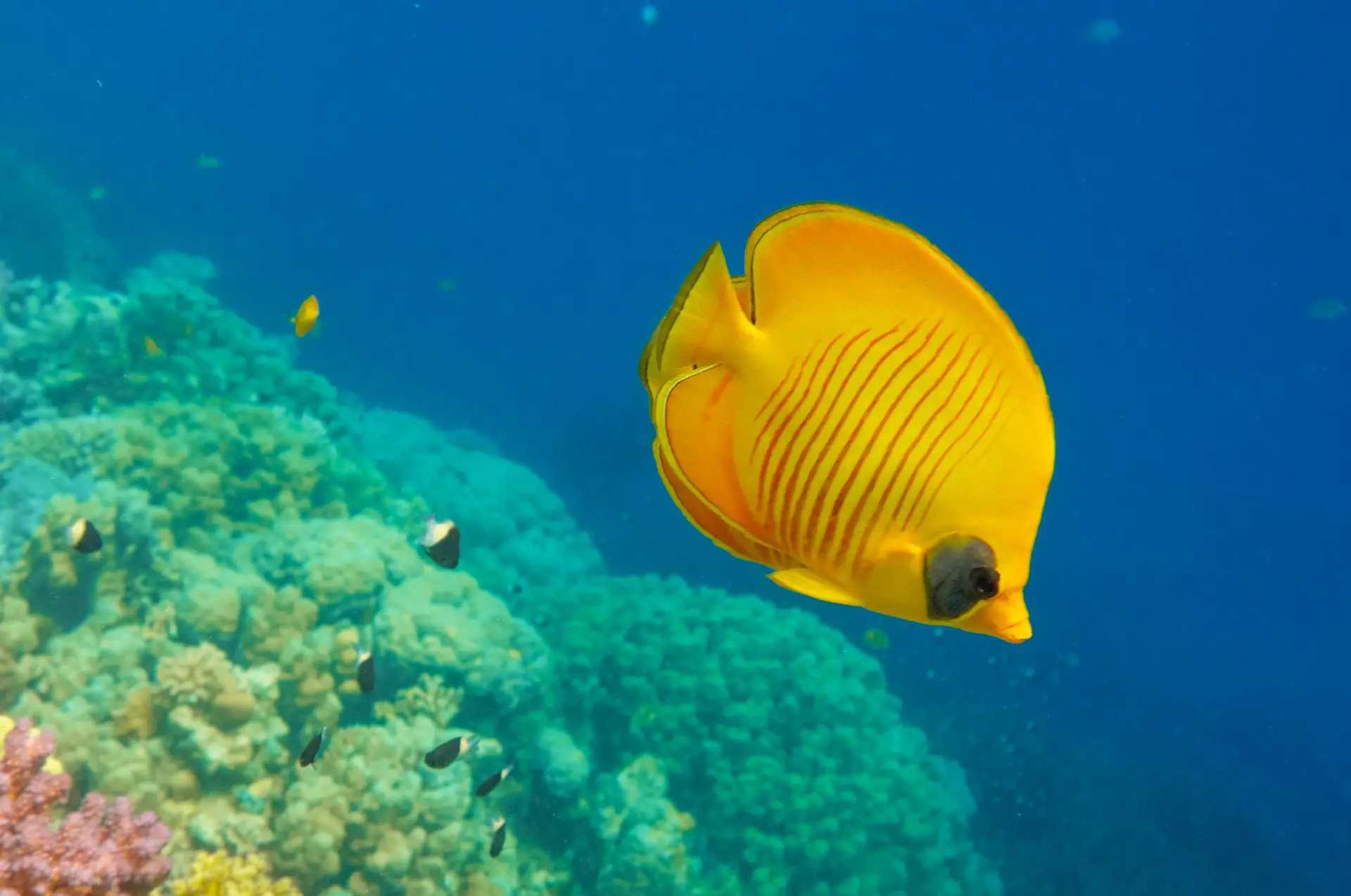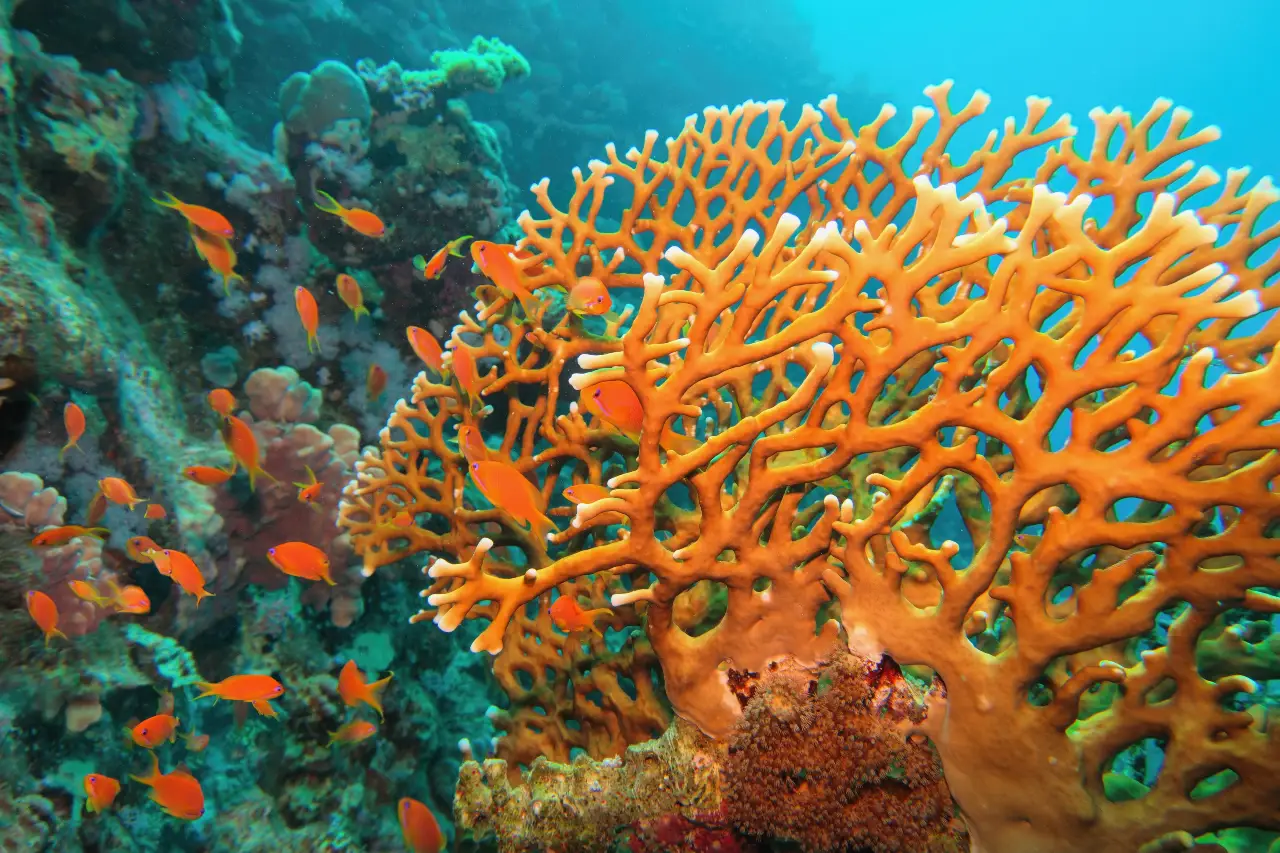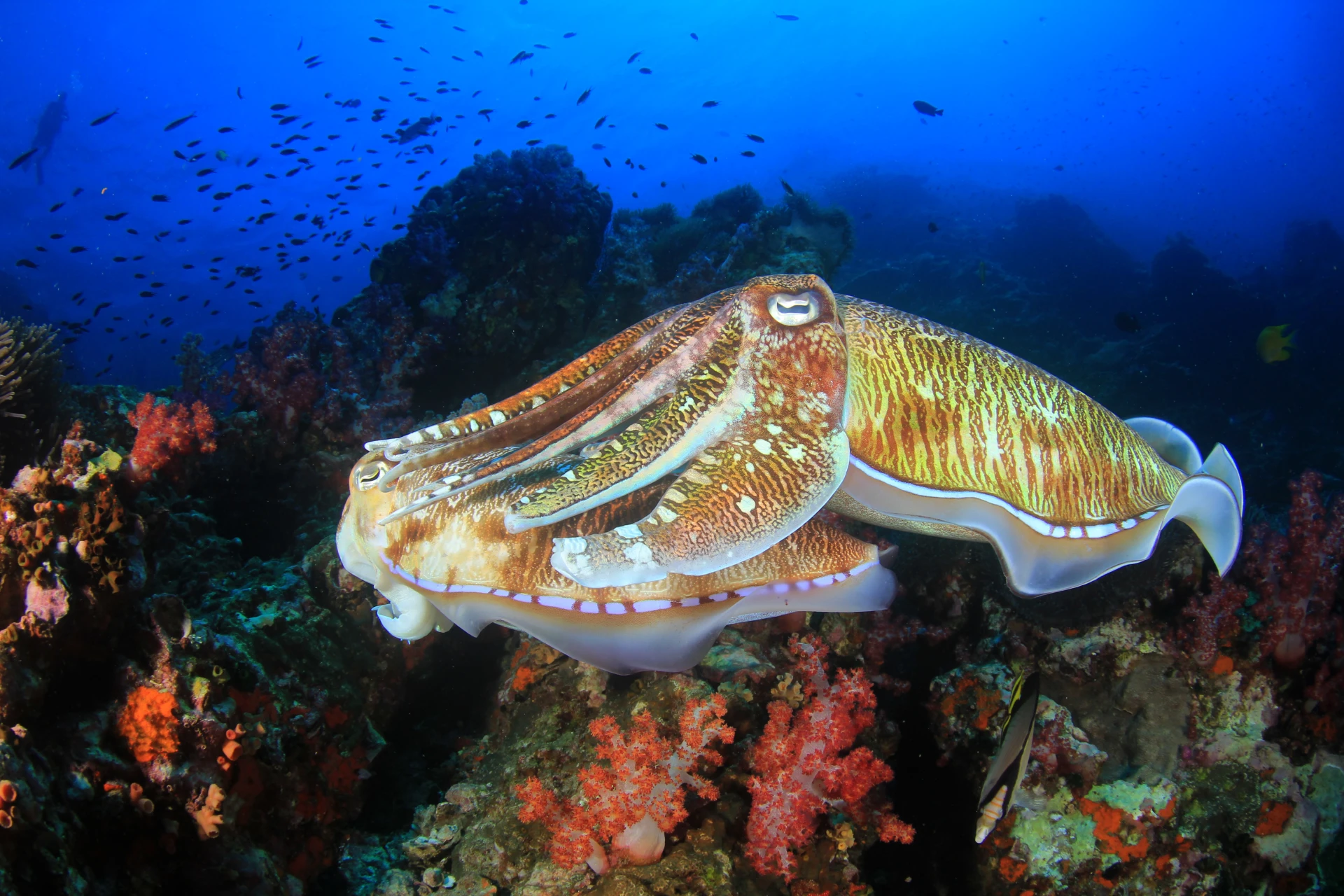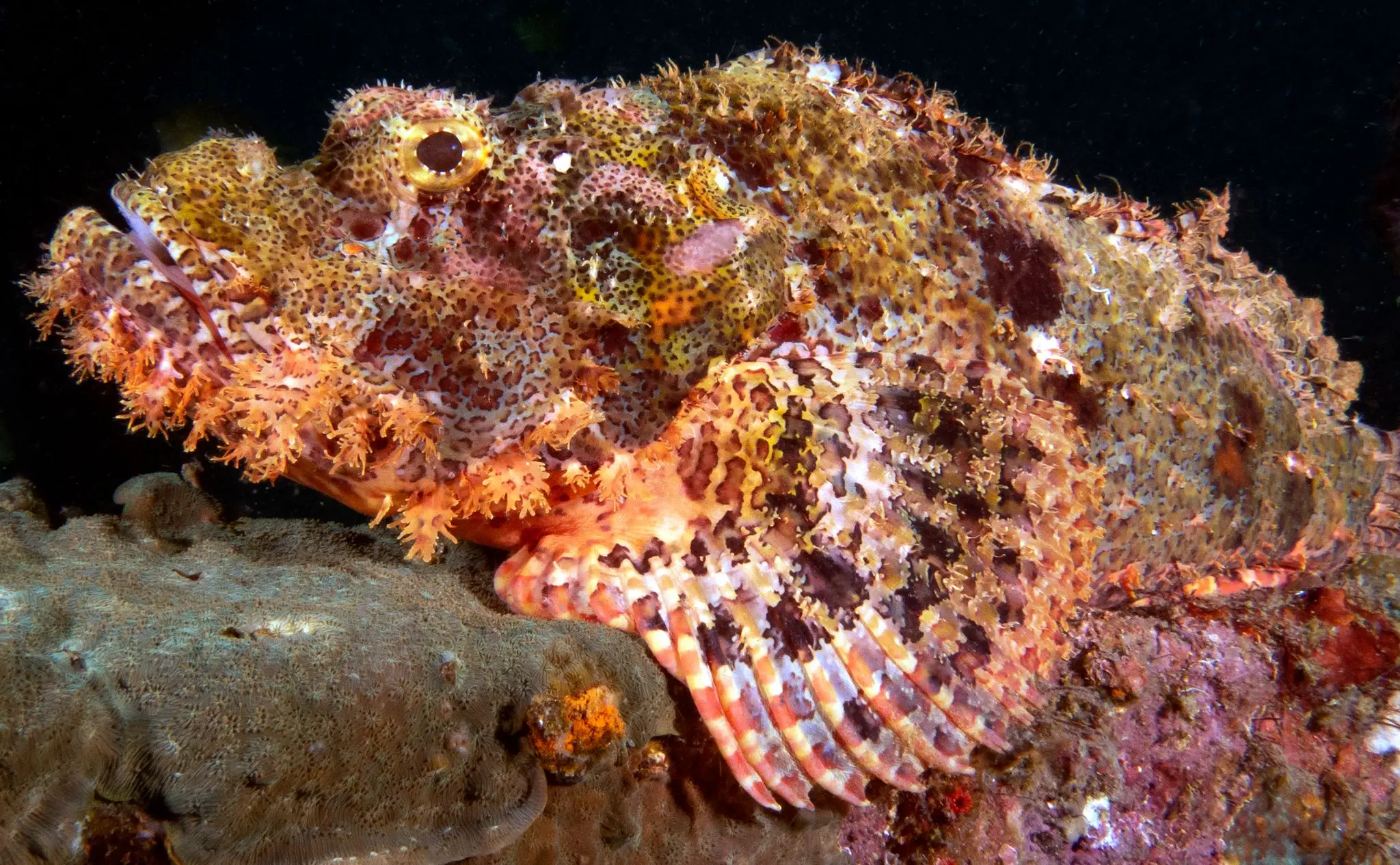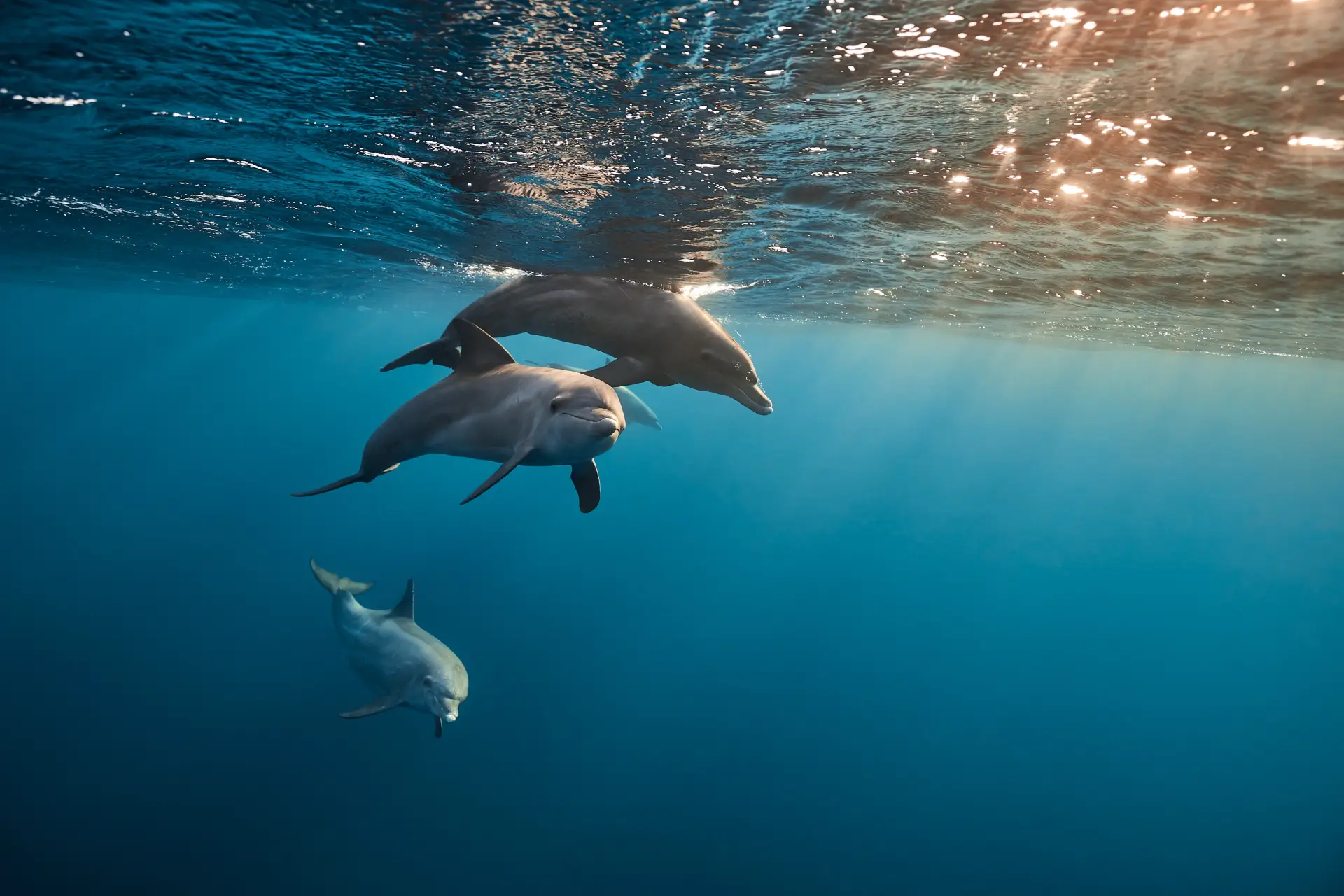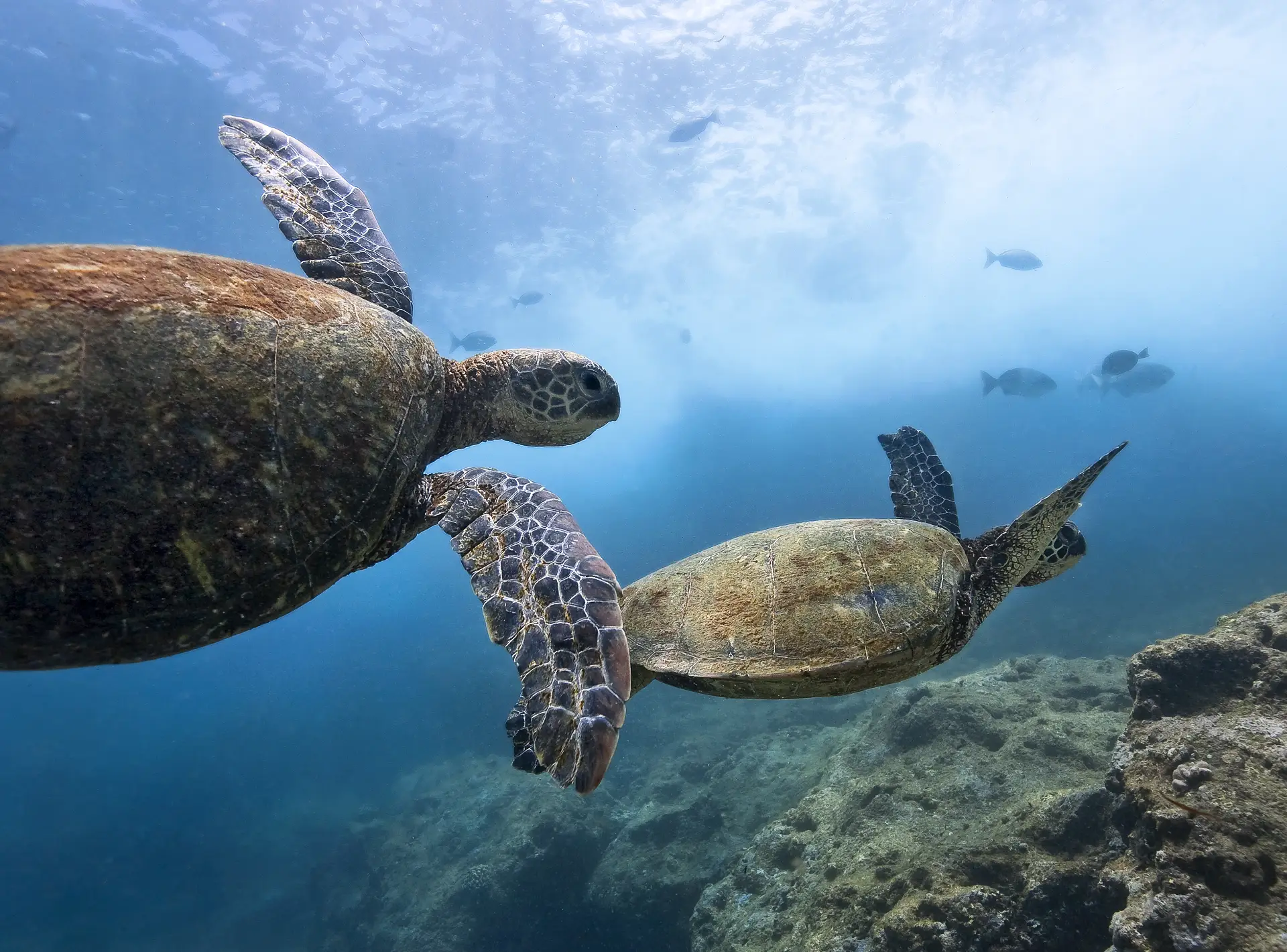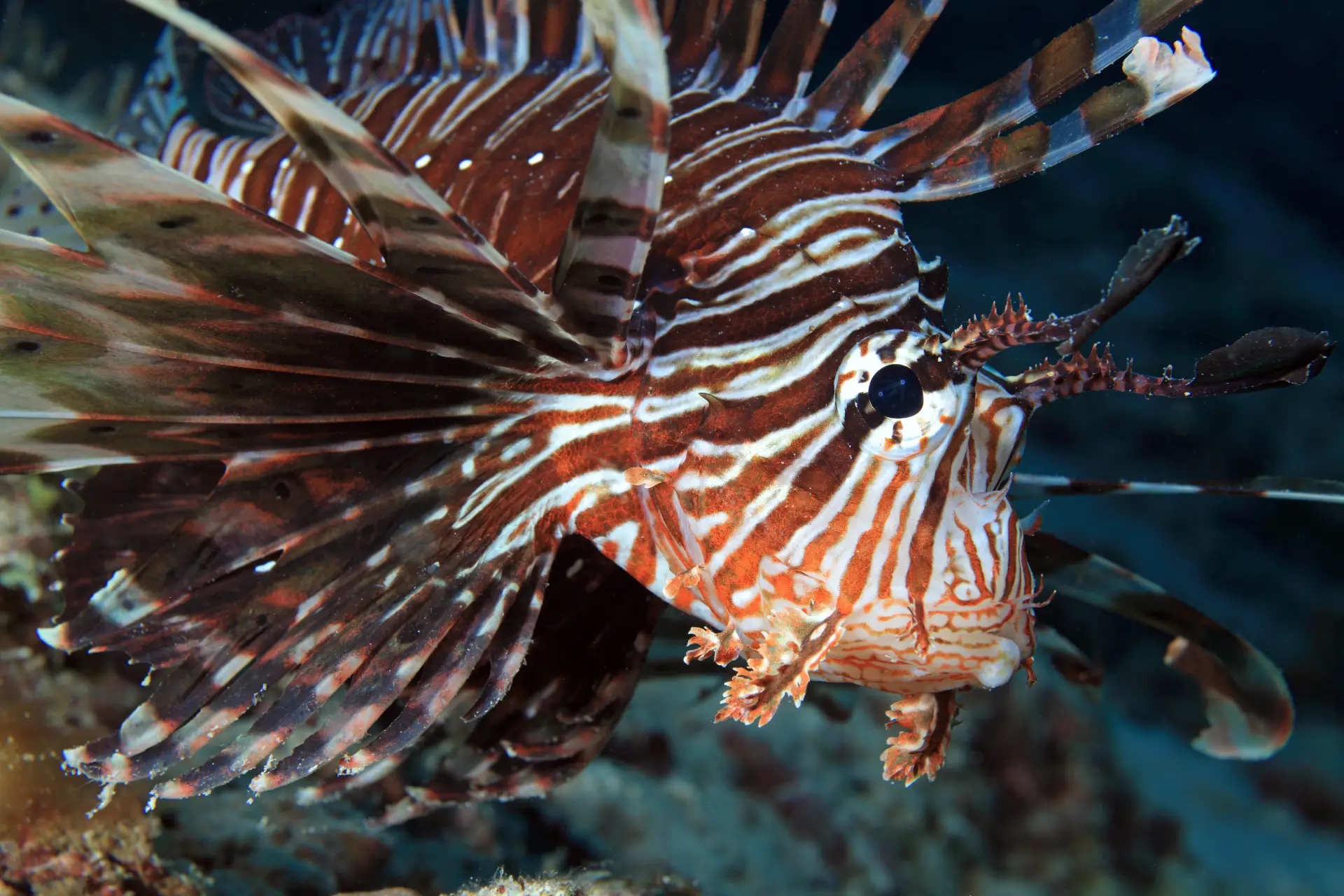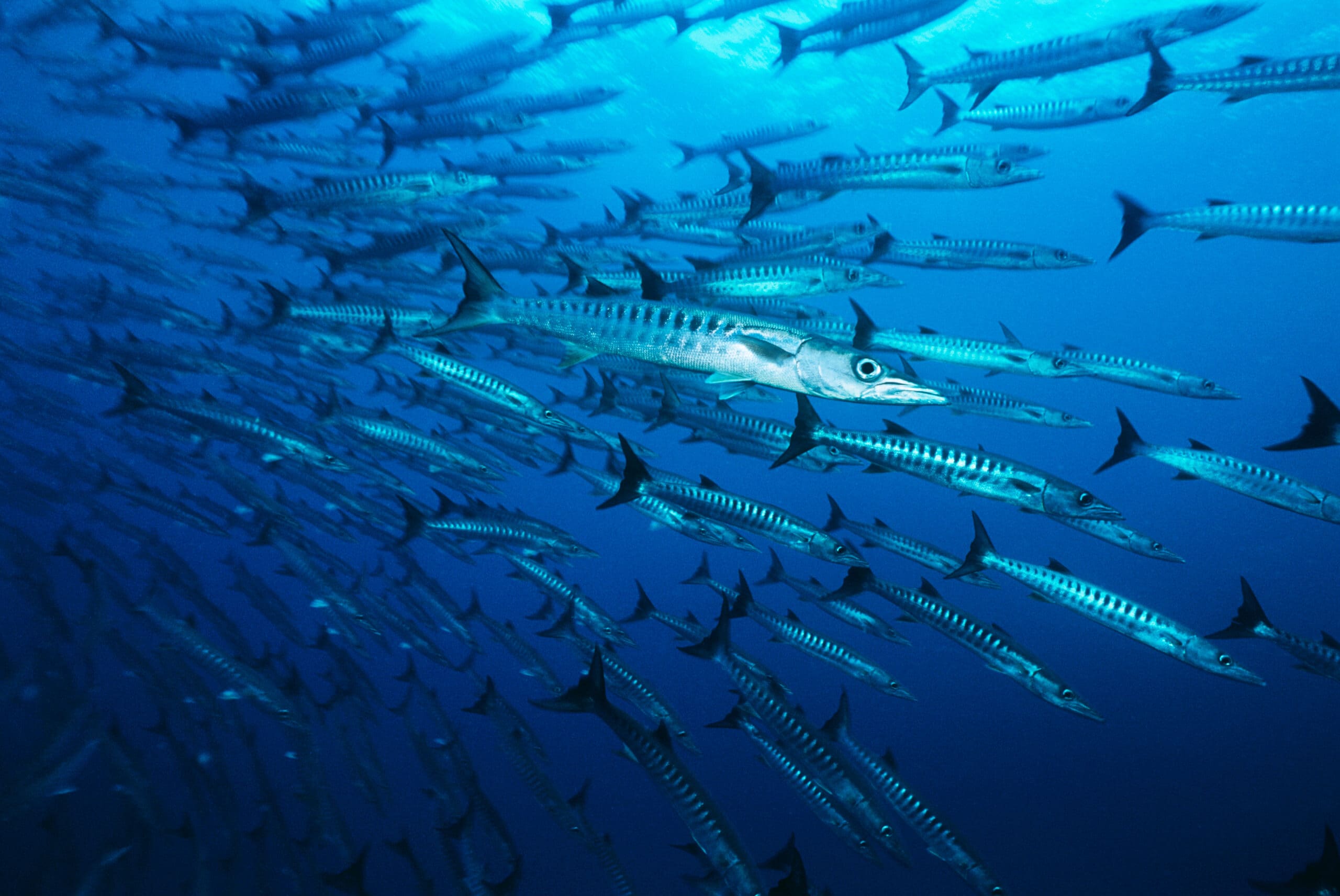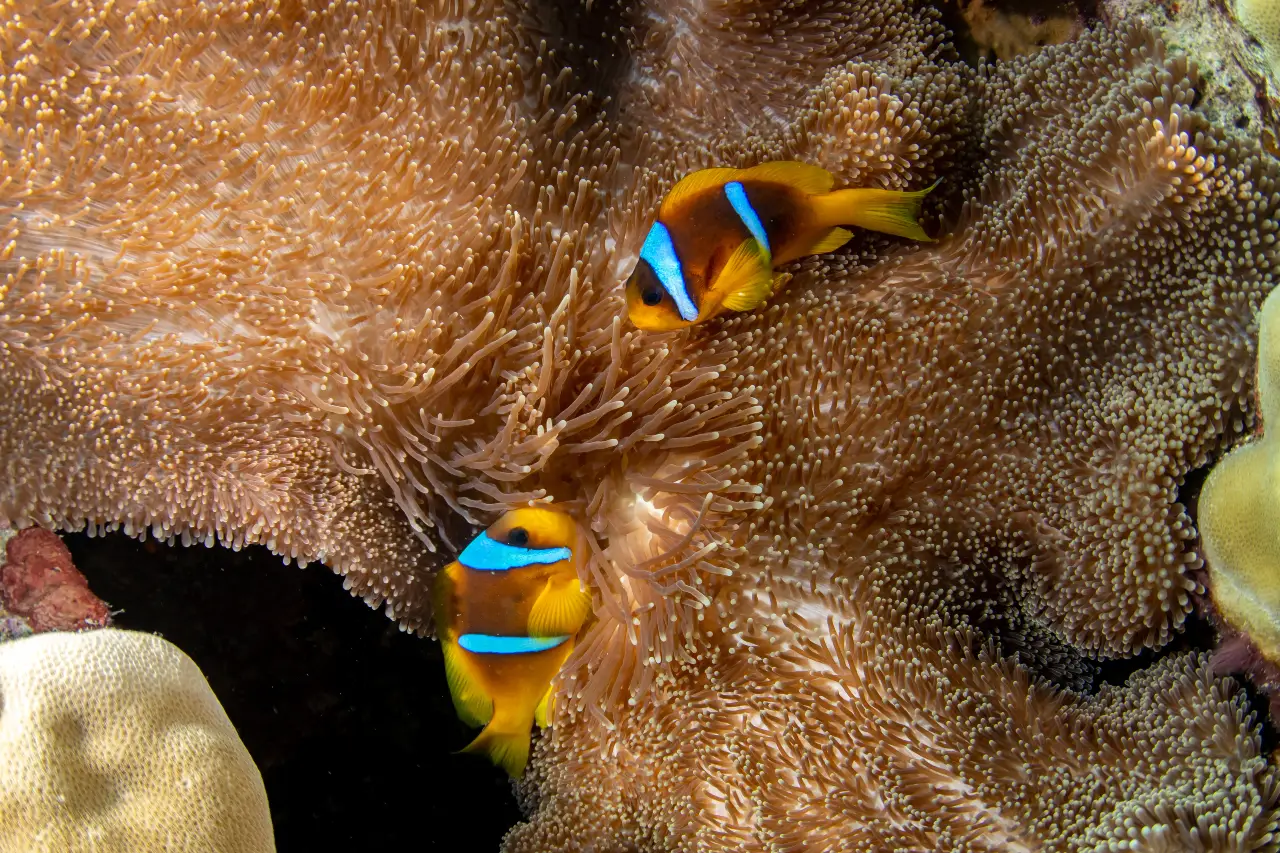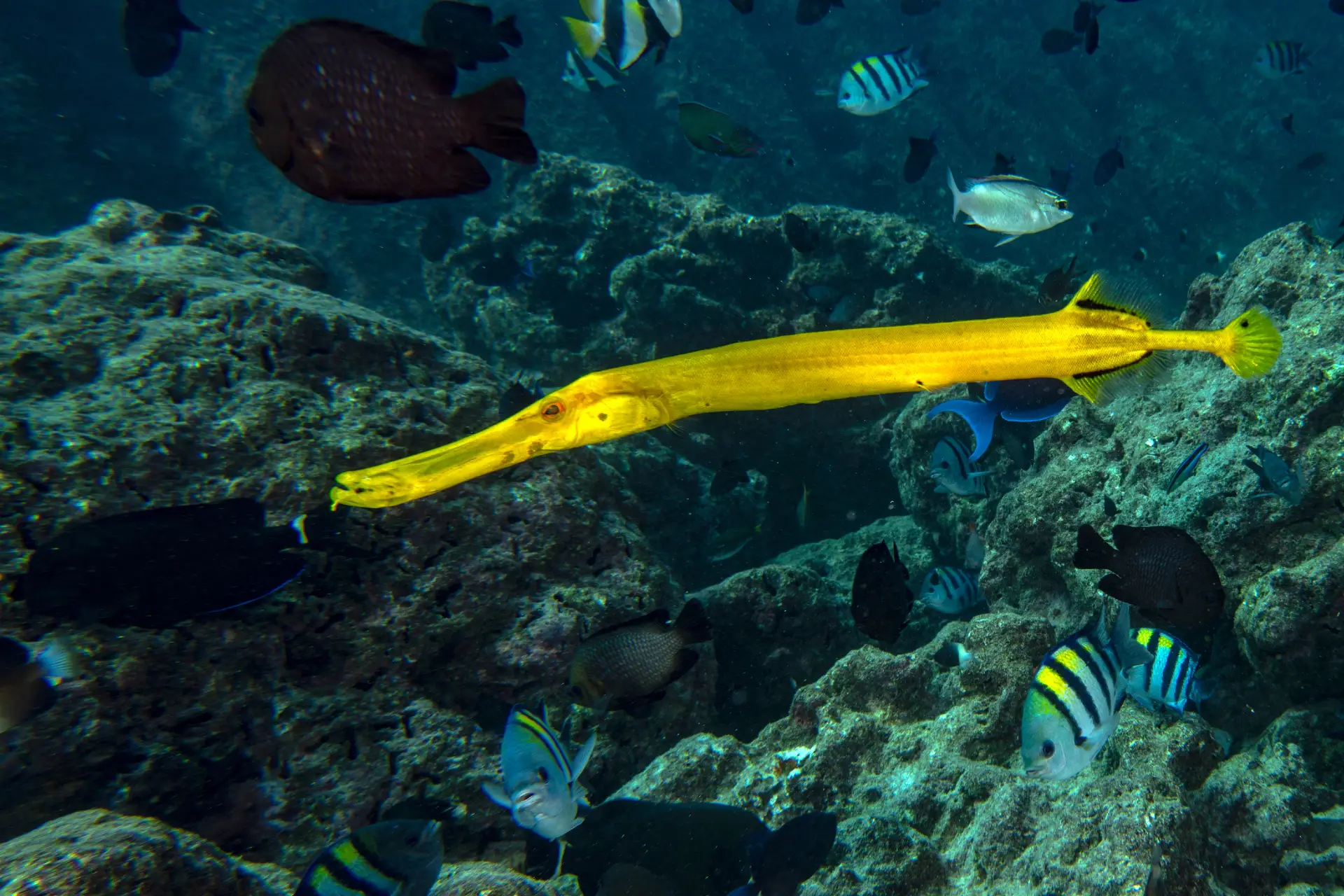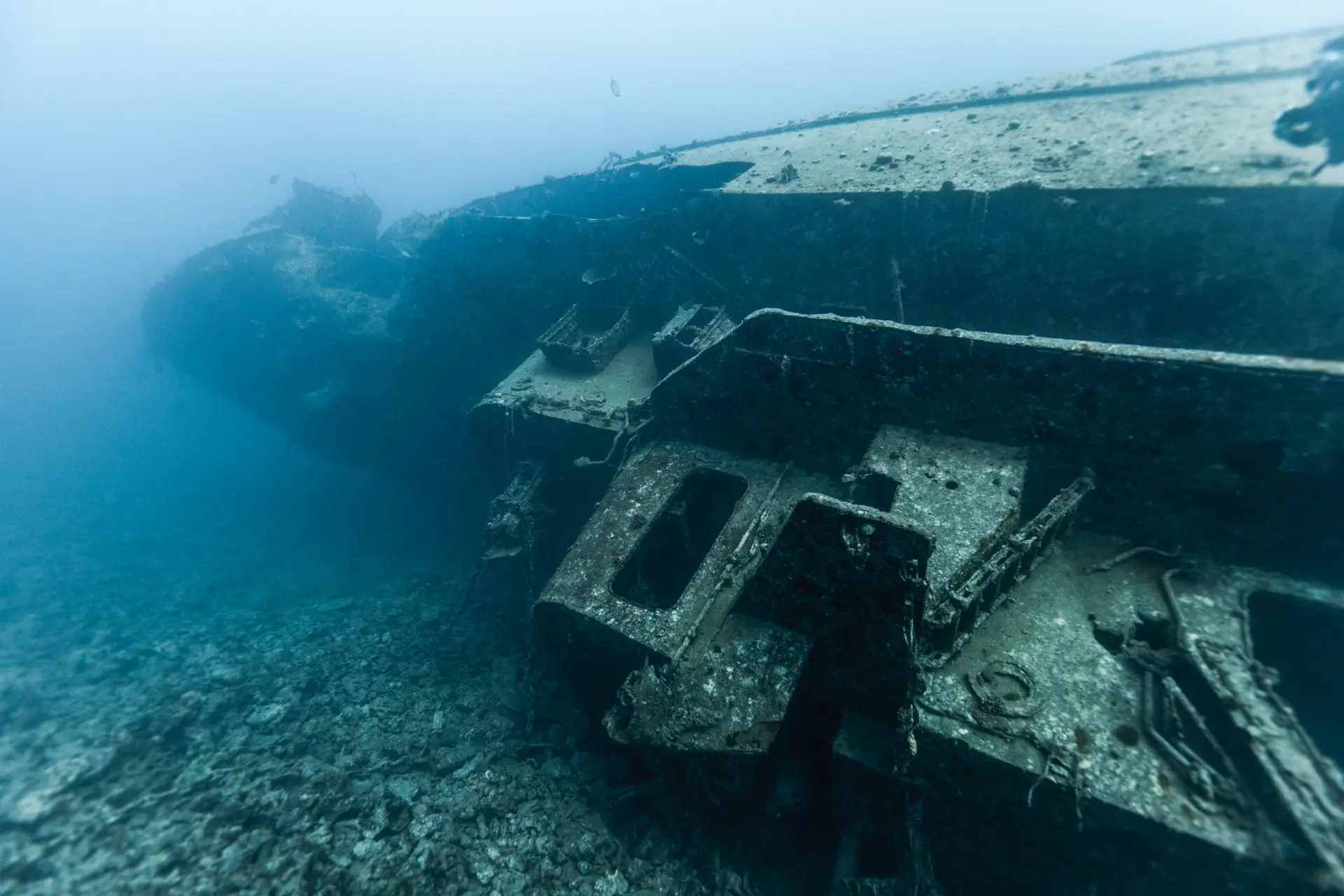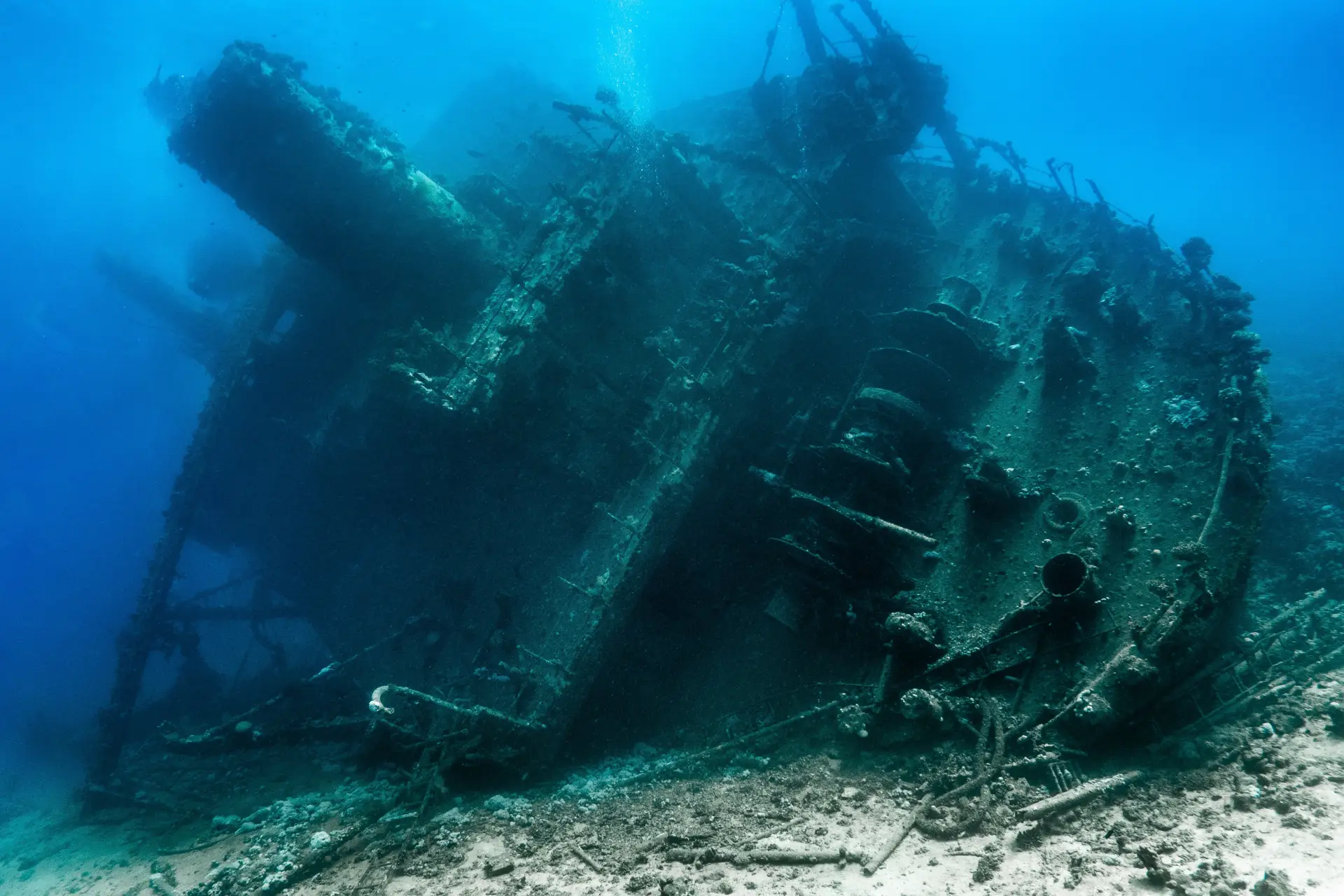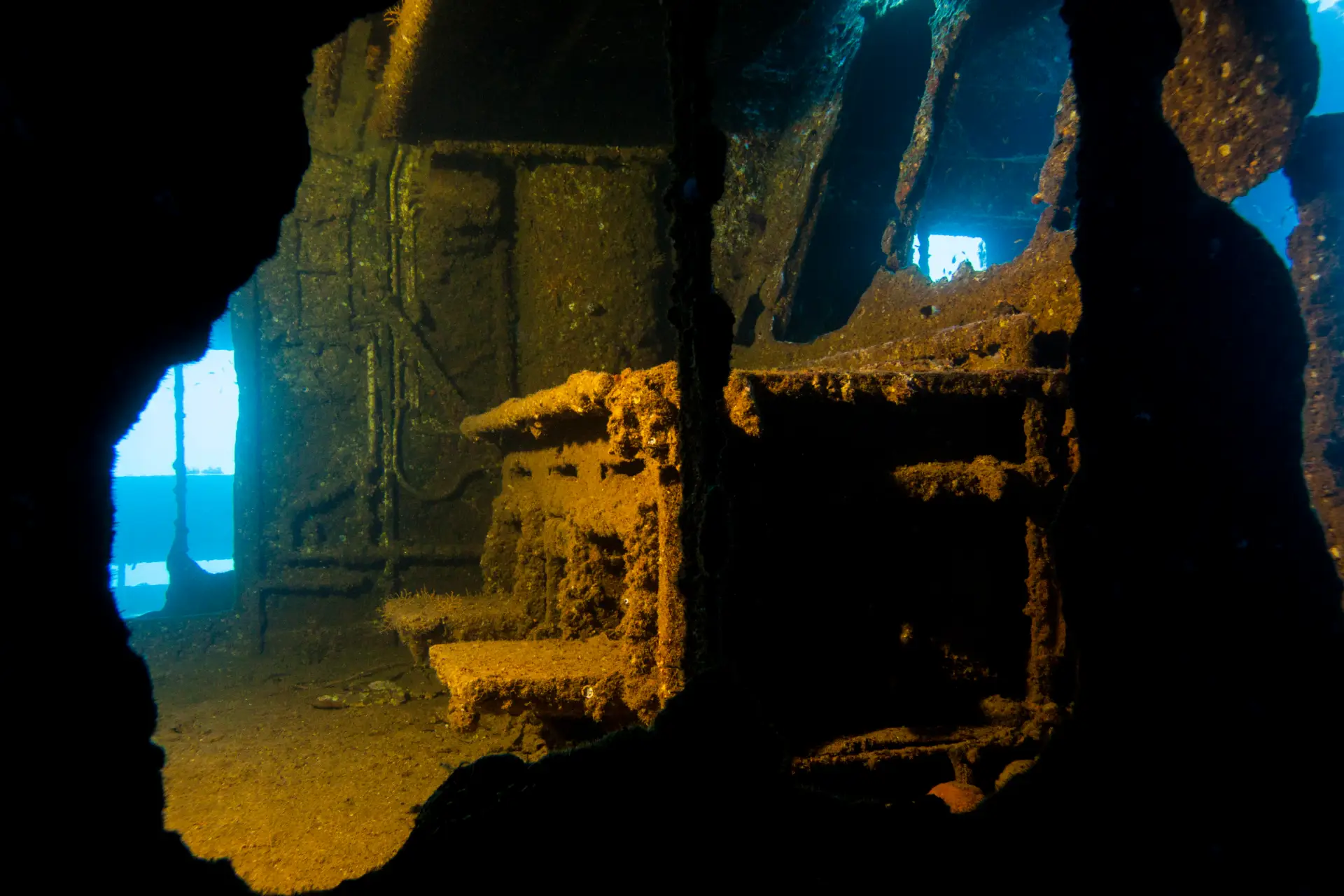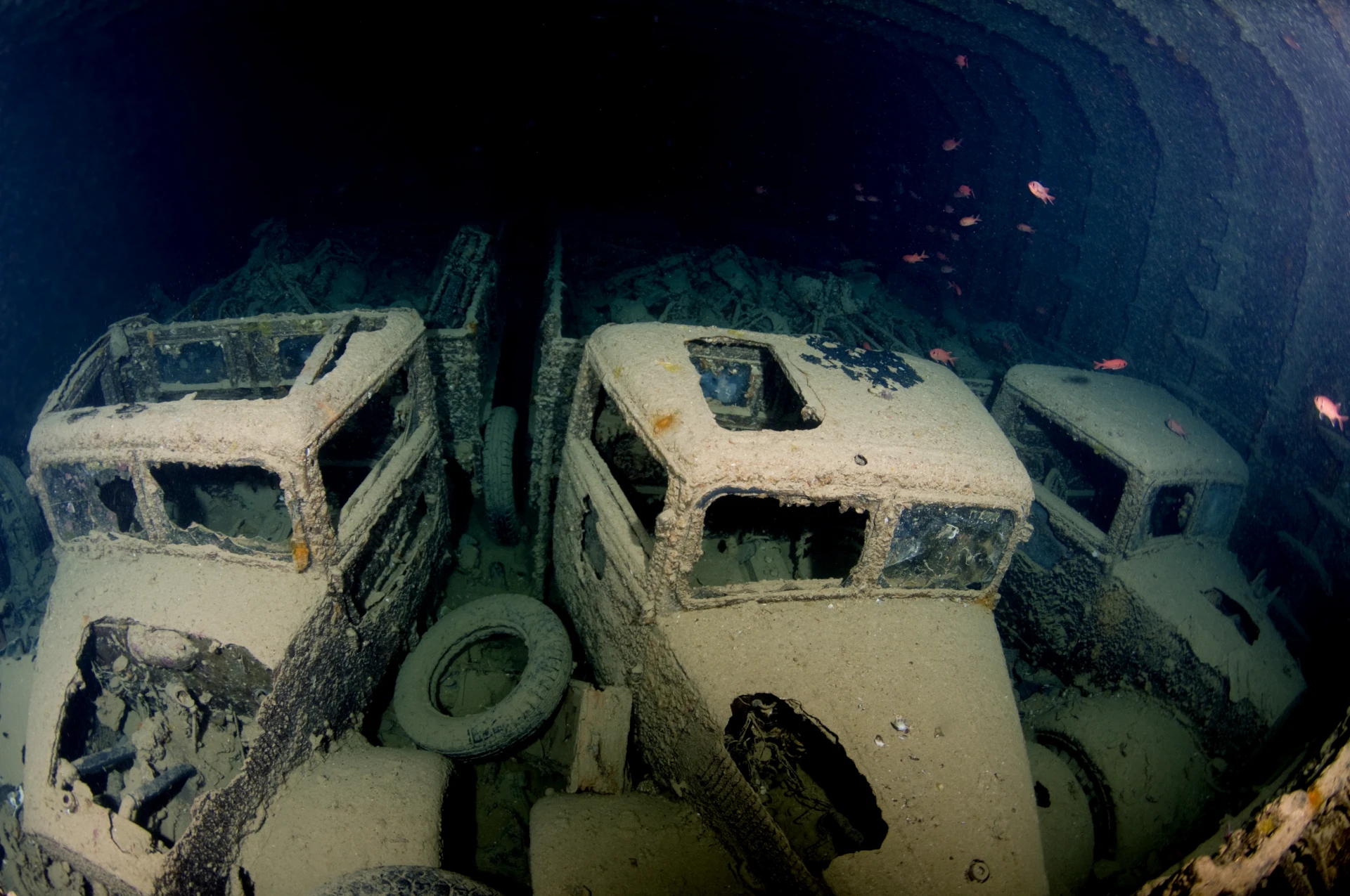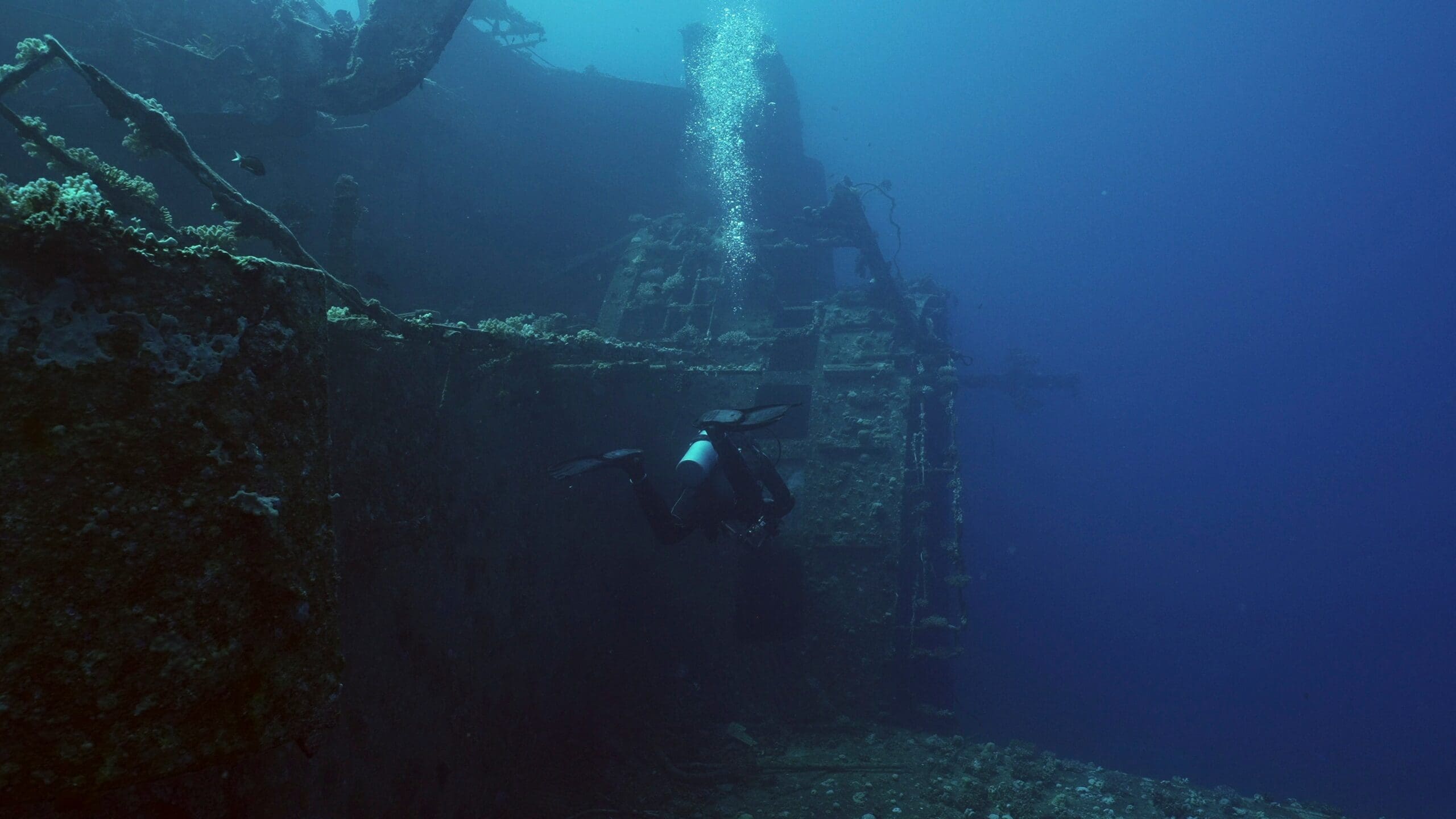Thistlegorm (Wreck)
The SS Thistlegorm is one of the most legendary wrecks in the world, and though it lies further north (in the Sinai area), many Hurghada dive safari trips journey overnight to include it. It’s a British WWII cargo ship, 126m long, that was sunk by German bombers in 1941 while at anchor. The Thistlegorm lies upright on the seabed at about 30m depth, with the main deck around 15m. The wreck is remarkably intact given its violent sinking; the bow, stern, and much of the midships stand as they were, though the bomb blasts opened large holes into the cargo holds. What truly sets Thistlegorm apart is its cargo – it was packed with war supplies for Allied forces: rifles, trucks, Jeeps, motorcycles, railway engines, airplane parts, and countless crates of ammunition and equipment. Diving the Thistlegorm is like stepping into a time capsule of World War II, now overgrown with marine life.
Divers usually begin at the imposing bow, where two massive deck guns still point into the blue. This area is often frequented by schools of batfish and snapper. As you swim along the deck, you’ll see the blast holes that allow entrance to the cavernous holds below. Inside Hold No. 2 and 3, the famous cargo is visible: rows of Bedford trucks with motorcycles stacked in their beds, artillery shells, and tires still neatly piled. Swim-throughs in these spaces reveal surreal scenes of fish weaving through motorbike wheels and soldierfish hiding in truck cabs. It’s common to find a resident turtle inside a hold, snacking on sponges growing on an old vehicle, or giant trevally patrolling the cargo, hunting smaller fish. Outside on the decks, winches and railings are draped in soft corals, and the bridge and captain’s quarters can be explored with care (one can still see the bathtub in the captain’s bathroom!). Near the stern, the two locomotive tenders carried as deck cargo lie on the sand at 30m, now acting as artificial reefs themselves. The Thistlegorm attracts big marine life: barracudas often hover around the mast, and jacks and tuna are commonly seen in the blue. At night, the wreck comes alive with Spanish dancer nudibranchs and feeding lionfish, though night dives here are usually only on liveaboard itineraries. Due to its depth and sometimes strong currents (plus its popularity, meaning many divers at once), Thistlegorm is typically an advanced dive, but it’s an unforgettable one. The combination of historical intrigue and vibrant sea life – from the smallest nudibranch on a motorcycle to the largest Napoleon wrasse gliding over the deck – makes SS Thistlegorm the crown jewel of Red Sea wreck diving.

